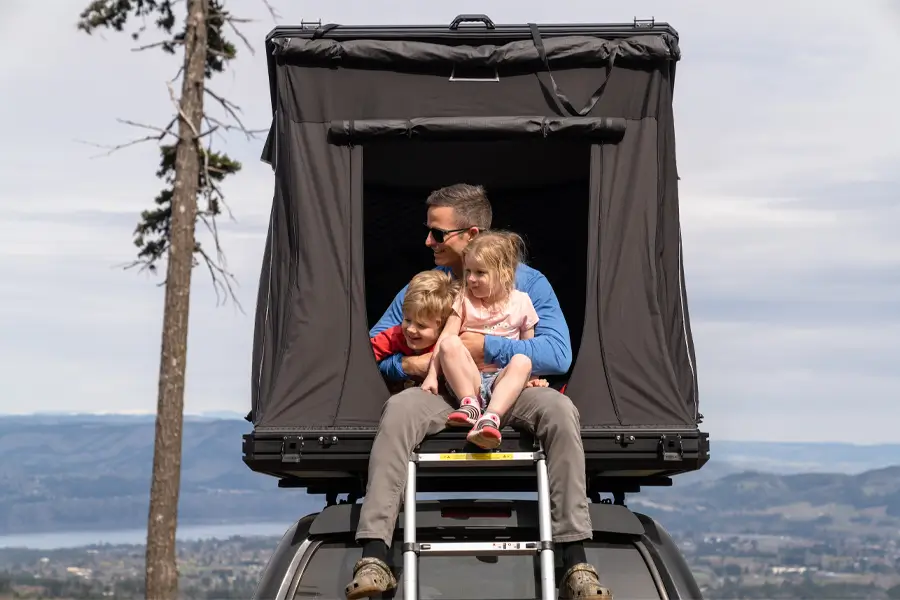Explore overlanding with kids safely and comfortably. Discover essential family-friendly tips, gear recommendations, vehicle advice, and camping strategies for memorable overland adventures.
- Introduction to Overlanding with Kids
- Why Family-Friendly Overlanding Requires Special Planning
- Choosing the Right Overlanding Family Vehicle
- Essential Gear for Overlanding with Kids
- Planning Your Overland Route with Kids in Mind
- Tips for Comfortable Overland Travel with Children
- Recommended Overlanding Gear Checklist for Families
- Frequently Asked Questions (FAQ)
- Conclusion & Call to Action
Introduction to Overlanding with Kids
Overlanding with kids is an increasingly popular way for families to explore the world while fostering adventure, learning, and bonding. Unlike typical camping or road trips, overlanding involves self-reliant travel through remote areas, often spanning several days or weeks. For families, this form of travel offers a unique opportunity to experience nature, learn survival skills, and strengthen family connections.
However, traveling with children in remote locations requires meticulous planning. Parents must consider safety, comfort, entertainment, and suitable gear to ensure a positive experience for all family members. This guide provides comprehensive advice on overlanding with kids, from selecting the right vehicle and gear to route planning, child-specific safety measures, and family-friendly camping strategies.
Why Family-Friendly Overlanding Requires Special Planning
Family overlanding presents challenges that differ significantly from solo or adult-only trips. Careful preparation is essential for ensuring a safe and enjoyable journey. Key considerations include:
- Safety in Remote Areas
Children are more vulnerable to injuries and environmental hazards. Families must equip themselves with first aid kits, child-appropriate safety gear, and emergency communication devices. - Comfort and Convenience
Long drives and overnight stays can be taxing on children. Adequate sleeping arrangements, portable food options, and comfortable seating are crucial for maintaining well-being. - Age-Appropriate Activities and Destinations
Selecting trails, destinations, and activities suitable for children ensures engagement and reduces stress. Avoid overly challenging routes or remote areas without nearby facilities for very young children. - Routine and Stability
Maintaining regular meal and sleep schedules helps children adjust to the unpredictability of overland travel.
Choosing the Right Overlanding Family Vehicle
The vehicle serves as the foundation of any overland adventure, especially when traveling with children. Families must prioritize safety, space, and reliability.
Vehicle Types Suitable for Families
- SUVs: Mid to large-sized SUVs with sufficient storage and off-road capability.
- 4×4 Vehicles: Essential for rugged terrain; ensure the vehicle has adequate ground clearance and payload capacity.
- Campervans and RVs: Provide integrated sleeping and cooking facilities, ideal for longer trips.
Safety Features and Modifications
- Seatbelts and Child Seats: All passengers, especially children, should have proper restraints.
- Storage Solutions: Use organized compartments to store gear, food, and children’s essentials securely.
- Suspension and Tires: Quality suspension and durable tires reduce discomfort and improve safety on rough trails.
Essential Gear for Overlanding with Kids
Family overlanding requires additional gear considerations compared to adult-only trips. Children’s needs for comfort, entertainment, and safety dictate much of the packing list.
Sleeping and Shelter Solutions
- Family-Friendly Tents: Choose tents with sufficient space for parents and children.
- Rooftop Tents: Provide elevated sleeping areas, protecting children from ground insects and animals.
- Sleeping Bags and Mats: Age-appropriate sleeping bags and padded mats improve rest.
- Pillows and Comfort Items: Familiar items can help children adjust to outdoor sleeping environments.
Food, Water, and Cooking Essentials
- Meal Planning: Incorporate balanced, child-friendly meals with snacks for energy during the day.
- Portable Stoves and Cookware: Compact stoves, pots, and utensils enable convenient cooking at campsites.
- Hydration Solutions: Water bottles and hydration packs ensure children remain properly hydrated, especially during active days.
- Food Storage: Airtight containers prevent spoilage and protect food from wildlife.
Entertainment and Activities for Children
Keeping children engaged during long trips is essential:
- Travel Games and Books: Portable games, coloring books, and educational materials.
- Nature Exploration: Encourage wildlife observation, hiking, and outdoor learning activities.
- Digital Entertainment: Limited use of tablets or audio stories can supplement offline activities.
- Creative Play: Encourage imaginative play using natural materials found at campsites.
Safety and Emergency Gear for Families
- First Aid Kits: Include child-specific medications, bandages, and emergency blankets.
- Emergency Communication Devices: Satellite phones, two-way radios, and personal locator beacons.
- Fire Safety Equipment: Fire extinguishers and fire blankets.
- Wildlife Awareness Tools: Bear spray, whistles, and noise-making devices for wildlife deterrence.
Planning Your Overland Route with Kids in Mind
Careful route planning is crucial for family overlanding:
- Child-Friendly Trails and Destinations
Select routes that minimize extreme terrain, offer scenic stops, and provide nearby amenities if needed. - Travel Distance and Rest Stops
Limit daily driving hours to prevent fatigue. Schedule frequent breaks for meals, stretching, and play. - Overnight Locations
Choose campgrounds or safe wild camping spots with sufficient space, restroom facilities, and secure sleeping areas. - Seasonal Considerations
Avoid extreme temperatures and severe weather conditions. Plan trips during mild seasons to ensure comfort and safety.
Tips for Comfortable Overland Travel with Children
Efficient organization and thoughtful planning improve family overlanding experiences:
- Efficient Packing: Use labeled bins and storage solutions for easy access to essentials.
- Routine Maintenance: Keep vehicles in top condition, check tires, fluids, and gear before departure.
- Meal and Sleep Schedules: Maintain familiar routines to reduce stress.
- Managing Stress and Engagement: Keep children occupied with activities, involve them in planning, and encourage participation in outdoor tasks.
Recommended Overlanding Gear Checklist for Families
| Category | Essential Items | Child-Specific Additions | Purpose |
|---|---|---|---|
| Vehicle | SUV/4×4, spare tire, jack, hand tools | Child car seats, travel cushions | Safe transport and repairs |
| Sleeping & Shelter | Family tent, rooftop tent, sleeping bags | Age-appropriate sleeping bags, pillows | Rest and protection |
| Cooking & Food | Portable stove, cookware, utensils | Snack containers, child-friendly utensils | Meals and hydration |
| Safety & Emergency | First aid kit, fire extinguisher, PPE | Child medications, safety whistles | Safety and emergency preparedness |
| Navigation & Communication | GPS, maps, two-way radios | N/A | Orientation and emergency contact |
| Entertainment | Travel games, books, outdoor toys | Storybooks, tablets (limited) | Engagement and fun |
| Clothing & Personal Items | Weather-appropriate attire, boots, hats | Extra layers, sun protection | Comfort and protection |
| Miscellaneous | Lanterns, insect repellent, cleaning supplies | Child-friendly toiletries | Hygiene and visibility |
Frequently Asked Questions (FAQ)
Q1: How can I keep my children safe while overlanding?
A1: Use proper child restraints, maintain first aid kits, carry emergency communication devices, and select safe routes. Always supervise children during activities.
Q2: What is the best age to start overlanding with kids?
A2: Families can begin with children as young as toddlers, provided gear and routes are adapted to their needs. Adjust trip length and difficulty according to age.
Q3: Can I overland with a standard family SUV?
A3: Yes, for mild to moderate trails. Ensure the vehicle is well-maintained, equipped with essential recovery gear, and does not exceed its load capacity.
Q4: What family-friendly camping gear is essential?
A4: Family tents, age-appropriate sleeping bags, portable cooking equipment, hydration systems, and child-specific safety gear are vital.
Q5: How do I entertain kids during long overland trips?
A5: Combine travel games, reading, digital media (in moderation), nature-based activities, and creative play. Involve children in simple tasks to maintain engagement.
Conclusion & Call to Action
Overlanding with kids offers a unique opportunity for families to explore, learn, and bond in the great outdoors. Proper preparation, from selecting the right vehicle and gear to planning safe, engaging routes, is essential for ensuring memorable experiences. By equipping your family with the appropriate family-friendly overlanding gear, maintaining routines, and considering the needs of children, you can embark on safe, enjoyable, and adventurous overland journeys.
For detailed guidance on essential overlanding equipment, visit our Overlanding Gear Essentials Guide. Explore more tips, gear reviews, and family-friendly routes at Just Overland to plan your next adventure with confidence and safety.








